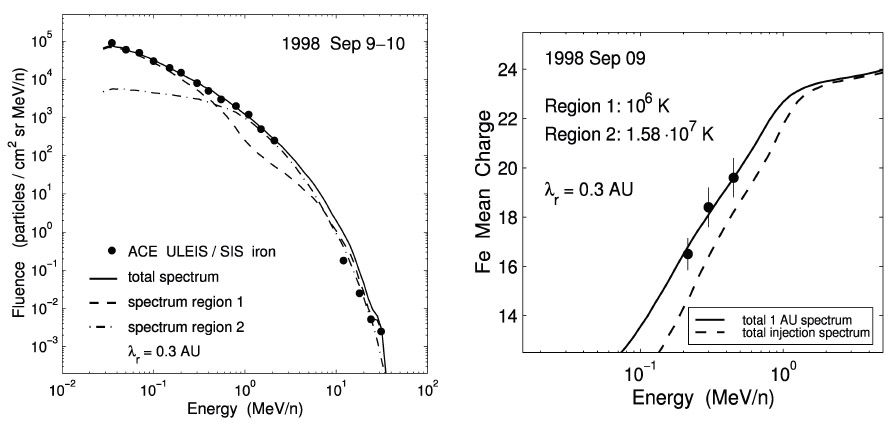
| ACE News Archives | ACE News #107 - July 25, 2007 |
Subscribe to ACE News |

It has been known for several years that the average charge state of energetic ions in impulsive energetic particle events is substantially higher than in CME-related solar particle events. ACE/SEPICA observations have demonstrated that all impulsive events observed during the time period 1997 to 2000 exhibit a strong increase in the ionic charge states of heavy ions in the energy range between 0.01 and 0.5 MeV/nucleon. This increase starts from a charge state typical for temperatures of 1-2 106 K, and is most pronounced for Fe (see ACE News #80 and Klecker et al., Adv. Space Res., 38, 493 497, 2006). This suggests that additional ionization of the more energetic ions occurs low in the corona. New model calculations that combine particle acceleration, charge stripping and coronal propagation with transport through interplanetary space (Dröge et al., Ap. J., 645, 1516 1524, 2006) can reproduce the observed energy spectra and ionic charge distributions of iron and thus provide constraints on the plasma parameters of the source region.
The figures show data from the impulsive solar energetic particle event of September 9-10, 1998, including fits to the energy spectra (left panel) and to the energy-dependent mean ionic charge state of iron (right panel). In this event the energy spectra and charge-state data are best reproduced by source plasma with an inhomogeneous temperature distribution, including contributions from plasma populations in the low corona with temperatures of 106 and 1.6 x 107 degrees, respectively. In order for the model to reproduce the observed energy dependence of the charge-state data the source region must be in the dense lower corona, at an altitude of less than 0.2 solar radii (see Klecker et al., Space Sci. Rev., in press, 2007).
This item was contributed by Berndt Klecker of the Max-Planck-Institut für extraterrestrische Physik in Garching, Germany, and Eberhard Möbius of the University of New Hampshire. Address questions and comments to
Last modified 25 Jul 2007, by